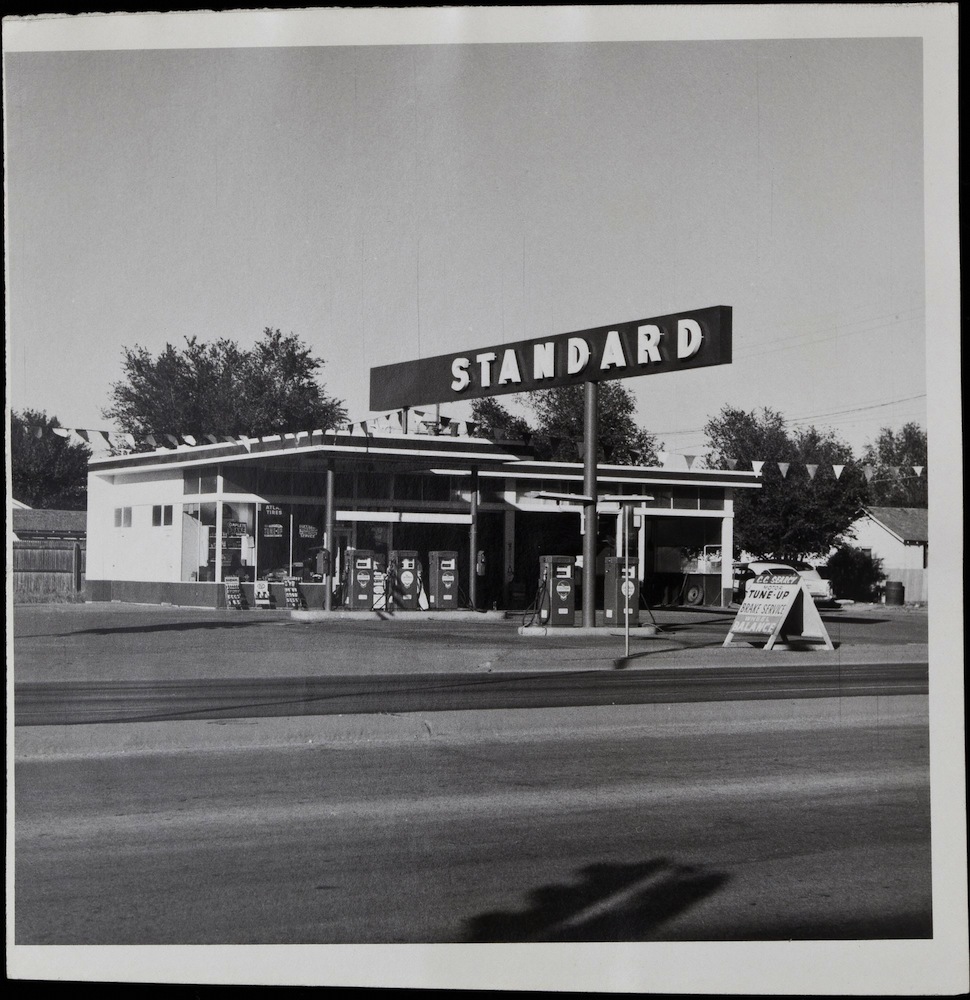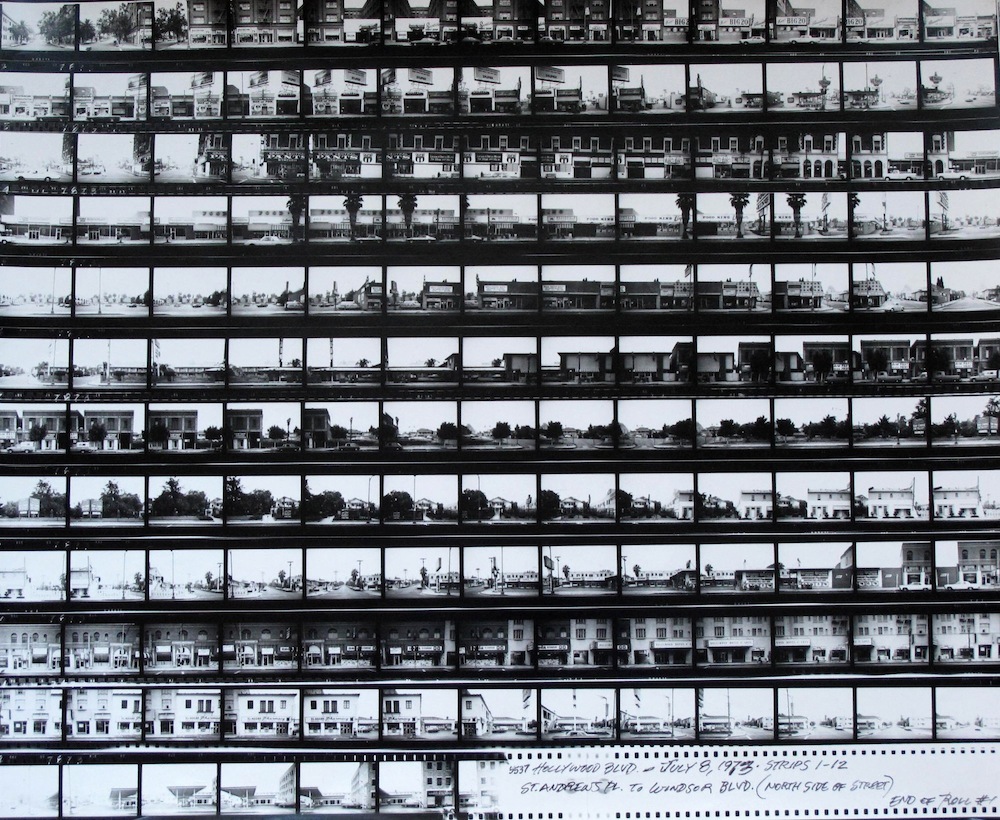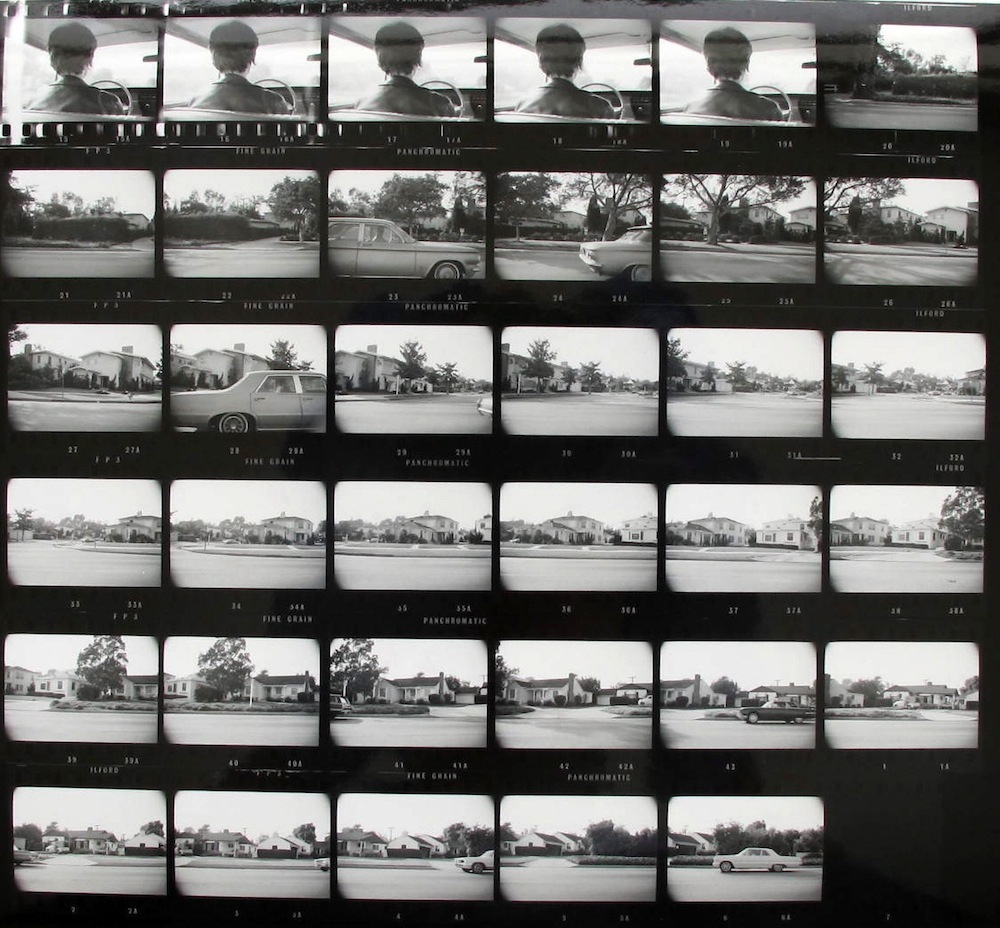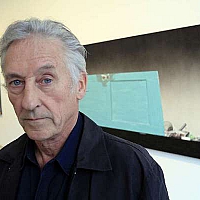
© Ed Ruscha
The J. Paul Getty Museum and the Getty Research Institute announced today the joint acquisition of over seventy photographs by artist Ed Ruscha as well as his Streets of Los Angeles archive, including thousands of negatives, hundreds of photographic contact sheets, and related documents and ephemera. A portion of the material will come to the Getty as a promised gift from the artist.
One of the most influential American artists working today, Ruscha moved to Los Angeles in 1956 and has continued to live and work here, incorporating the citys architecture, streets, and even its attitude into paintings, prints, drawings, and photographs that are known for their graphic directness.
This combined acquisition by the Getty Museum and the Getty Research Institute now makes the Getty Center the preeminent resource for understanding the role of photography in Ruschas practice and will make this aspect of the artists work more widely accessible, locally and internationally. "I am humbled and elated to have my work go to the top of the hill," said Ruscha.
The majority of the 74 photographs and two contact sheets acquired by the J. Paul Getty Museum were created in conjunction with the seminal series of self-published books that Ruscha began producing in 1962 including Twentysix Gasoline Stations (1963), Some Los Angeles Apartments (1965), Thirtyfour Parking Lots in Los Angeles (1967), and Real Estate Opportunities (1970).

© Ed Ruscha
The Streets of Los Angeles archive acquired by the Getty Research Institute (GRI) begins with the photographic and production material for Ruschas landmark 1966 book Every Building on the Sunset Strip, and includes the original camera-ready three-panel maquette used for the publication. This ongoing project subsequently evolved into a vast photographic archive that spans over four decades and documents many major Los Angeles thoroughfares, including Santa Monica Boulevard, Melrose Avenue, and Pacific Coast Highway, shot in 1974 and 1975, and more than 25 other Los Angeles streets that Ruscha photographed since 2007. In total, the archive comprises thousands of negatives, hundreds of photographic contact sheets, and related documents and ephemera. Also included is an artists proof of the Then and Now portfolio (2005), based on photographs of Hollywood Boulevard taken thirty years apart.
The acquisition joins works by Ruscha already in the collection of the GRI, including unpublished photographs related to Ruschas rare Dutch Details book (1973) and the only known complete run of Orb, a journal edited and produced by Ruscha while still a student at Chouinard Art Institute.
"We are thrilled to add these essential works by Ruscha to the Museums photography collection," said David Bomford, acting director at the J. Paul Getty Museum. "The serial nature of Ruschas photographic work contributed to the importance of conceptual photography, an area that the Getty Museum has recently begun collecting. The acquisition also supports our philosophy of collecting individual artists in depth and artists whose careers are closely tied to Los Angeles."


© Ed Ruscha
Added Thomas Gaehtgens, director of the GRI, "The archival material we are acquiring is virtually unknown. Very little of it has ever been exhibited or studied, and the depth of Ruschas engagement with L.A. urbanism will come as a surprise to many. It opens entirely new avenues for scholarship about one of the major artists of the postwar period, as well as for the study of the Los Angeles cityscape."
A selection of works will be included in two related Getty Museum exhibitions scheduled for Spring 2013: Los Angeles Architecture: 1940-1990, organized by the Getty Research Institute and the Getty Museum, and In Focus: Ed Ruscha, organized by the Getty Museum.
"This joint acquisition by the Museum and GRI exemplifies the unique and vital synergy between the Gettys four programs and underscores the importance of the Getty as a primary resource for discovery, exploration, and research of art made in Los Angeles during the second half of the twentieth century," said Jim Cuno, President and CEO of the J. Paul Getty Trust.
About Ed Ruscha. Born in Omaha, Nebraska, in 1937, and raised in Oklahoma City, Ruscha moved to Los Angeles in 1956 to study at the Chouinard Art Institute (todays California Institute of the Arts in Valencia). He began exhibiting with Ferus Gallery in Los Angeles in 1963 and Leo Castelli Gallery in New York in 1973, and is currently represented by Gagosian Gallery. His interest in typography, signage, and, more broadly, "the vernacular" positions his work equally within the contexts of Pop art and Conceptual art.
Photography has played a crucial role throughout Ruschas career, beginning with images he made during a trip to Europe with his mother and brother in 1961, and most memorably as the imagery for more than a dozen books that present precisely what their titles describe, among them the following: Twentysix Gasoline Stations (1963), Various Small Fires and Milk (1964), Some Los Angeles Apartments (1965), Every Building on the Sunset Strip (1966), Thirtyfour Parking Lots in Los Angeles (1967), Nine Swimming Pools and a Broken Glass (1968), Real Estate Opportunities (1970), and A Few Palm Trees (1971).
Spanning a period of ten years, many of Ruschas self-published books reveal his interest in the architecture of his immediate environment. His photographs are straightforward, even deadpan, in their depiction of subjects that are not generally thought of as having aesthetic qualities. Mostly devoid of human presence, these photographs emphasize the essential form of the structure and its placement within the built environment.
The slender, inexpensively produced volumes had a profound impact on the work of some of the most important photographers of the 1970s and 80s, including Lewis Baltz, and Bernd and Hilla Becher, as well as artists of subsequent generations, most notably Andreas Gursky, Catherine Opie, Thomas Struth, and Jeff Wall.
Several of the photographs that appeared in these publications became source material for works of art that Ruscha would realize in other media either at the same time or several yearseven decadeslater. He reinterpreted a number of photographs published in Some Los Angeles Apartments (1965) in a series of graphite drawings the same year. Most notable, however, is Ruschas sustained interest in the photograph of Standard Station, Amarillo, Texas that he took in 1962 and published in Twentysix Gasoline Stations the following year. Over the next four decades, he would create several works on canvas or paper that abstracted the original silhouette of the gas station, including the 1963 oil painting with the same title, which is on view in the current exhibition Pacific Standard Time: Crosscurrents in L.A. Painting and Sculpture, 1950-1970, and Burning Gas Station (1965-66), both recognized as iconic works in his oeuvre. Also included in the acquisition are three Polaroid photographs made in 1964-65 that serve as studies for Ruscha's painting The Los Angeles County Museum on Fire (1965-68), which is also currently on view in the exhibition Crosscurrents.

